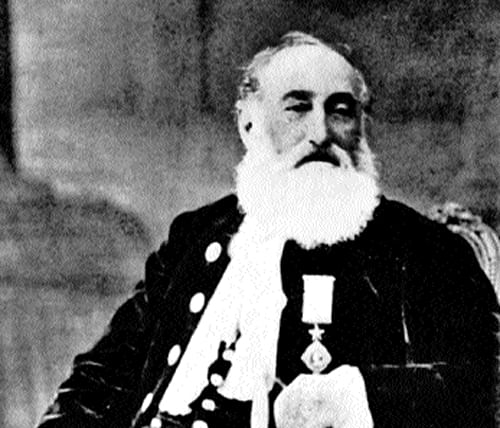
Philips Meadows Taylor was not just another British administrator serving in India. He became a son of the Indian soil. Srinivas Sirnoorkar throws light on Taylor’s love for India and the numerous contributions he made to Gulbarga.
Ever since the East India Company established itself in India, a number of Englishmen of consequence have come and gone, but very few of them have made a lasting contribution to enrich the polity, literature, culture and economy of India. Counted prominently among them is Philips Meadows Taylor, who, after making India his karmabhoomi, left indelible marks behind.
After the death of Krishnappa Nayak, the penultimate king of the Surapur principality in Gulbarga district, in 1843, the British were eager to control the independent state ruled by the Nayak dynasty, who are also known as Bedars being hunters by profession, with the help of the Nizam of Hyderabad. To achieve this goal, the British appointed Meadows Taylor as the ‘Political Agent’ in Surapur. He took up the assignment at a very crucial and tumultuous period when a virtual anarchy was prevailing over the political succession in Surapur.
When Krishnappa Nayak died, his son Venkatappa was only seven years old. Krishnappa’s younger brother Pidda Nayak was conspiring to usurp the throne while the former’s widow Eashwaramma had taken over the reigns. Taylor had to strive to take the local people into confidence; he promised to remain as the political representative till Venkatappa was old enough to be the king.
Taylor, who came to India to become a rich man by setting up his own business, encountered an entirely different fate. He was moved by the heterogenous and pluralistic culture of India, and was touched by the love and affection of Indians. He decided to dedicate his life to the service of the people and found a fertile ground in Surapur to accomplish his mission.
Man of action
He initiated a number of reforms in almost every field. He empowered people by enhancing their agricultural skills, opening up employment avenues, starting schools and improving infrastructure. He was so kind-hearted that he would spend money from his own pocket to provide relief to people torn by severe drought. Meadows became ‘Mahadev Baba’ to the masses.
His contributions have been well-recorded in the dispatches he used to send to the London Times and the books he wrote that portrayed India in the right sense to the West. “When Europe was reeling under ignorance and wilderness of uncivilised culture, India was at the peak of its intellectual height,’’ Taylor had remarked. Meadows Taylor, a multi-talented person, was also a photographer and painter. His standing among the earliest and pathbreaking archaeologists of India is rather high. The Archaeological Survey of India has paid rich tributes to Taylor in its book The History of Indian Archaeology 1784-1947 by Sourindranath Roy.
Taylor’s archaeological investigations have been acknowledged as very significant.
Taylor brought Gulbarga region on the map of Indian archaeology. When none had thought of venturing into archaeological exploration here, it was Taylor, who, with his irrepressible zeal and passion, took up the mission. He was the first to devote special attention to the megalithic tombs, many examples of which he discovered particularly in Surapur, above the confluence of rivers Bhima and Krishna. He opened a number of tombs and compiled accurate descriptions of their structure and contents. He published his findings in the Journal of The Bombay Branch of the Royal Asiatic Society and the Transactions of the Royal Irish Academy. They clearly testify that Taylor had developed his own technique of excavation, far ahead of his time.
During the middle of 19th Century, Taylor had discovered and studied certain settlements of the megalithic culture consisting of cromlechs, kistavaens and cairns and other relics at places like Jevargi, Andola, Chickanahalli, Rajan Kollur and Hagaratagi in Gulbarga district. The kistavaens found at these places were described by Taylor as being similar to those in England and other countries in Western Europe.
He is regarded as the first among Indian archaeologists to grasp the true function of excavation, and was also the first to actually draw and describe sections with strata clearly distinguished and marked out. Even modern archaeologists acknowledge that Taylor had evolved excellent technical methods to unravel the hidden heritage treasures of India.